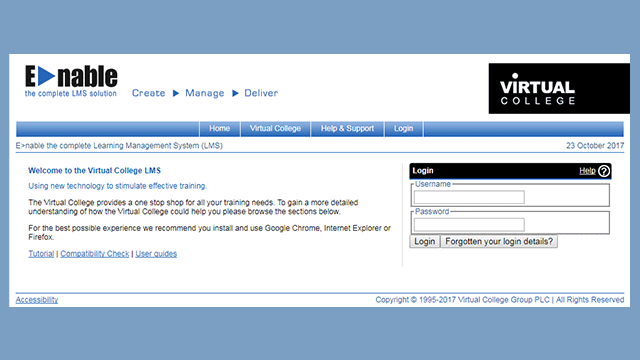The Health and Safety at Work Act: What Employers and Employees Need to Know
The Health and Safety at Work Act 1974: What Employers and Employees Need to Know
The average individual will spend 90,000 hours working during their lifetime, which equates to roughly one-third of their entire life. So, with work being such a core component of the everyday lives of people around the globe, it’s crucial that employee well-being and welfare are prioritised within the workplace.
Health and safety is a critical component of how businesses operate, ensuring that any risk that could have negative repercussions on the business is mitigated and that employees’ well-being, both mental and physical, is protected.
Legislations and regulations are in place in countries around the world to ensure that employers and employees are not exposed to any dangers in the workplace. Thanks to these legal enforcements, the well-being of everyone in the workplace, as well as members of the public, can be maintained by avoiding workplace accidents or incidents.
In this article, we delve into one piece of legislation in the UK known as the Health and Safety at Work Act 1974. We explain what this legislative piece is, alongside its purpose, and the responsibilities that both employers and employees have in line with following its guidelines and principles.
What is the Health and Safety at Work Act 1974?
The Health and Safety at Work etc Act 1974 is the most important piece of legislation in the UK regarding occupational health and safety.
Appointed by the government body known as the Health and Safety Executive (HSE), who enforces the legislation alongside relevant local authorities, the act is sometimes referred to as the HSW Act, HSWA, or HASAWA. When it was first implemented, it changed the landscape of responsibility for making workplaces safe.
The act outlines exactly what the general duties are to maintain the health and safety of individuals in workplace environments, primarily for employers and employees, but also for managers, owners, and those who maintain work premises. One of the biggest, and most positive, changes the act made was placing many requirements on employers to hold them accountable for maintaining a safe working environment for their employees.
Whether you’re looking for a refresh, or you’re starting a new business, as an employer or a self-employed individual, it’s important that you know the key points of this legislation. Similarly, if you’re in employment, it’s equally important to know what your individual responsibilities are and the guidelines that need to be followed in your place of work.
What is the Purpose of the Health and Safety at Work Act 1974?
At the highest level, the main purpose of the Health and Safety at Work Act 1974 is to ensure that employers are aware of, and are held responsible for, their employees’ welfare, which must be maintained at all times within a safe working environment.
This is a broad remit and one that means employers need to do whatever is reasonable and practicable to meet their obligations. Therefore, the legislation allows for workers to carry out their day-to-day jobs with minimal risk of accident or injury whilst also encouraging a high standard of health and safety in the workplace for the benefit of both employees and the public.
What are the 4 Main Objectives of the Health and Safety at Work Act?
The Health and Safety at Work Act is split into four main sections. Each section outlines a different area of focus and, therefore, the objectives of the legislative piece in ensuring the safety of all parties within a workplace environment.
The four main objectives of the Health and Safety at Work Act are as follows:
- Employee Responsibilities
- Employer Responsibilities
- The Enforcement of Health and Safety Legislation
- Enforcement Action
Health and Safety at Work Act Responsibilities
In line with the aforementioned objectives, both the employer and the employee have their own responsibilities for ensuring that the health, safety, and welfare of themselves and those within their workplace environment are maintained.
Below we have delved into further detail about the responsibilities of both employees and employers as outlined by, and in accordance with, the Health and Safety at Work Act:
The Health and Safety at Work Act for Employees
Whilst a large portion of the Health and Safety at Work Act has been developed to hold employers responsible for maintaining a safe workplace for their employees, there are also a number of responsibilities that employees must follow in line with the legislation.
Employees must maintain and exercise a duty of care and skill, as outlined by common law, within a workplace in their relationships with employers and fellow employees. Thus, there are several key responsibilities that employees must adhere to in order to not only ensure their own safety but to also maintain this duty of care by protecting others in their place of work. These general responsibilities are as follows:
- Employees must not make efforts to disturb or damage anything that has been enforced and implemented in the workplace to protect the health and safety of individuals in this environment
- Employees must consider that they are likely to be held responsible should they be discovered to have been in breach of the Health and Safety at Work Act 1974 regulations. This may also mean that the employees in question may be convicted, or subject to fines, accordingly
- Employees need to make active efforts to ensure and protect not only the well-being of themselves within the workplace, but also their fellow employees, and execute these efforts adequately
The Health and Safety at Work Act for Employers
Employers' primary duty in line with the Health and Safety at Work Act 1974 is to ensure the health and safety of employees and members of the public within their workplace. In order to better understand how this complex responsibility needs to be achieved, there are a few specific areas that the legislation breaks things down into:
Assessing Risk
It’s your responsibility as an employer to fully understand your business and the risks that it might pose to your employees. This is why a risk assessment is essential to good health and safety policy.
The purpose of a risk assessment is to identify any hazards that could pose a risk to the safety of people within a place of employment, whether this is something common or highly unlikely. The process of carrying out a risk assessment can be fairly simple if you’re running a small office with just a handful of employees, but in larger and more dangerous buildings, the risk assessment may be very complex.
Helping Employees Avoid Risk
In order to protect your employees from the risks that you’ve identified, you will need to put measures in place to both reduce the chance of the hazard occurring and mitigate the impact if an accident were to occur. There are countless ways that this can be done, but a few of the main things that you can think about include the following:
- Making sure any procedures that you have in place are safe. This means, for example, ensuring that manual handling instructions are given for any lifting or pushing tasks
- Regularly checking to make sure that equipment is safe to use. Whether you’re checking the electrical safety of computers in an office or the effectiveness of a kill switch on dangerous machinery, you need to make sure employees are working with safe equipment
- Giving employees the training that they need to carry out their jobs safely, such as how to carry out a task in such a way that avoids injury
- Giving employees the tools and equipment that they need to avoid injury. Protective equipment is hugely important in many industries including construction and manufacturing
Consulting with Employees
The HASAWA also makes it clear that employers have a responsibility to consult employees on matters of health and safety. After all, those that are doing the work are often best placed to understand their own needs in this regard. This consultation can be direct, through a workplace representative or an appointed union representative.
Any workplace with five or more employees has a legal obligation to keep a written record that is up-to-date to document their health and safety policy, which they should have developed alongside employees.
FAQs
When Was the Health and Safety at Work Act Introduced?
The Health and Safety at Work Act was introduced in 1974. Before this year, there was no overarching formal health and safety legislation in place that ensured the well-being of all those working in the UK.
Can Employees be Prosecuted Under the Health and Safety at Work Act?
An employee can be prosecuted under the Health and Safety at Work Act. In order to prosecute the individual in question, you must be able to show that the person was: at work, that they are employed, and provide evidence that the person did not take care of someone’s health and safety in the workplace or that they didn’t comply with their employer as was required.
Is It True That the Health and Safety at Work Act Does Not Protect Pets?
Whilst there is no dedicated legislation relating to having pets in the workplace, the Health and Safety at Work Act 1974 does state that employers need to ensure the welfare, health, and safety of their own employees and others, as long as this is within reasonable capacities.
So, whilst it’s not specifically stated in the act that pets are protected in the workplace, there is an unwritten duty of care should animals be in your place of work.
Summary
Without health and safety in the workplace, hundreds of thousands of avoidable work-related injuries would likely take place across the UK. Thanks to enforced legislations and regulations such as the Health and Safety at Work Act 1974, both employers and employees can work with peace of mind knowing that their well-being is being looked after and prioritised at all times.
We hope this article has given you the insight you need, as an employer or an employee, to understand the Health and Safety at Work Act and the responsibilities required of you to ensure the maintenance of a safe working environment.
For employers who are looking to learn more about health and safety in the workplace, our ‘Health and Safety Training Package' is a useful starting point. The collection of resources is aimed towards helping ensure that businesses meet their duties under the HASAWA, which can minimise the risk of bad publicity or lawsuits for their company.




























































